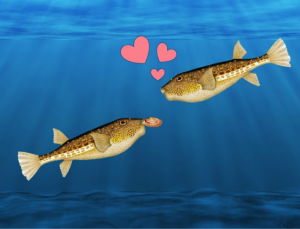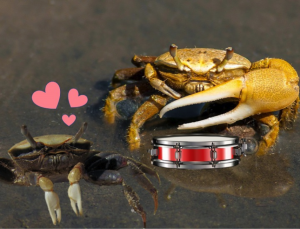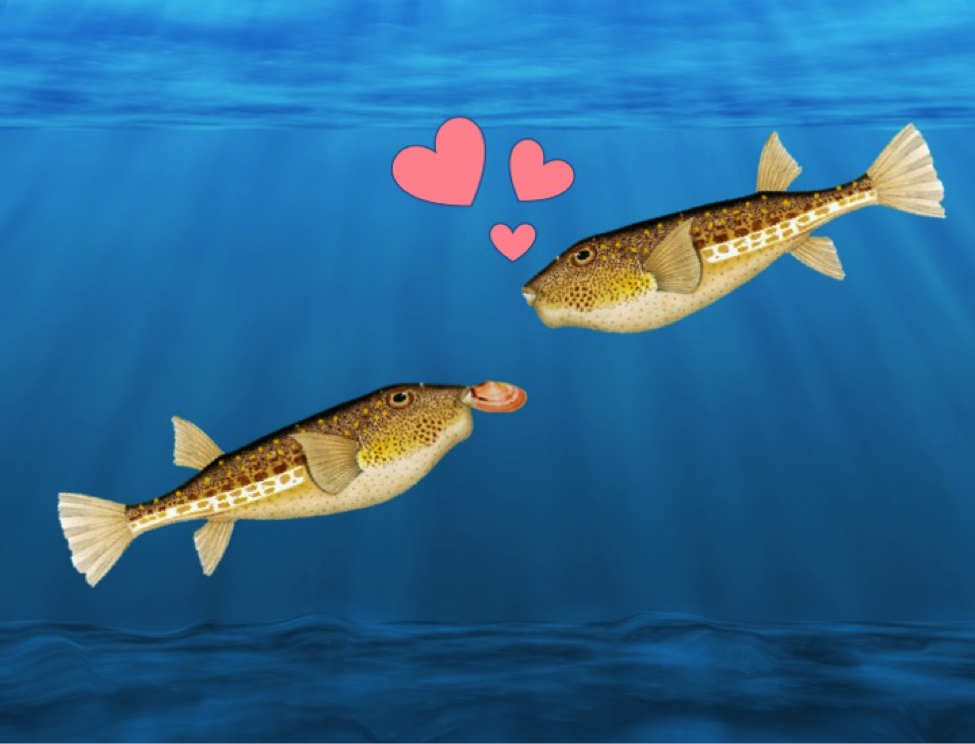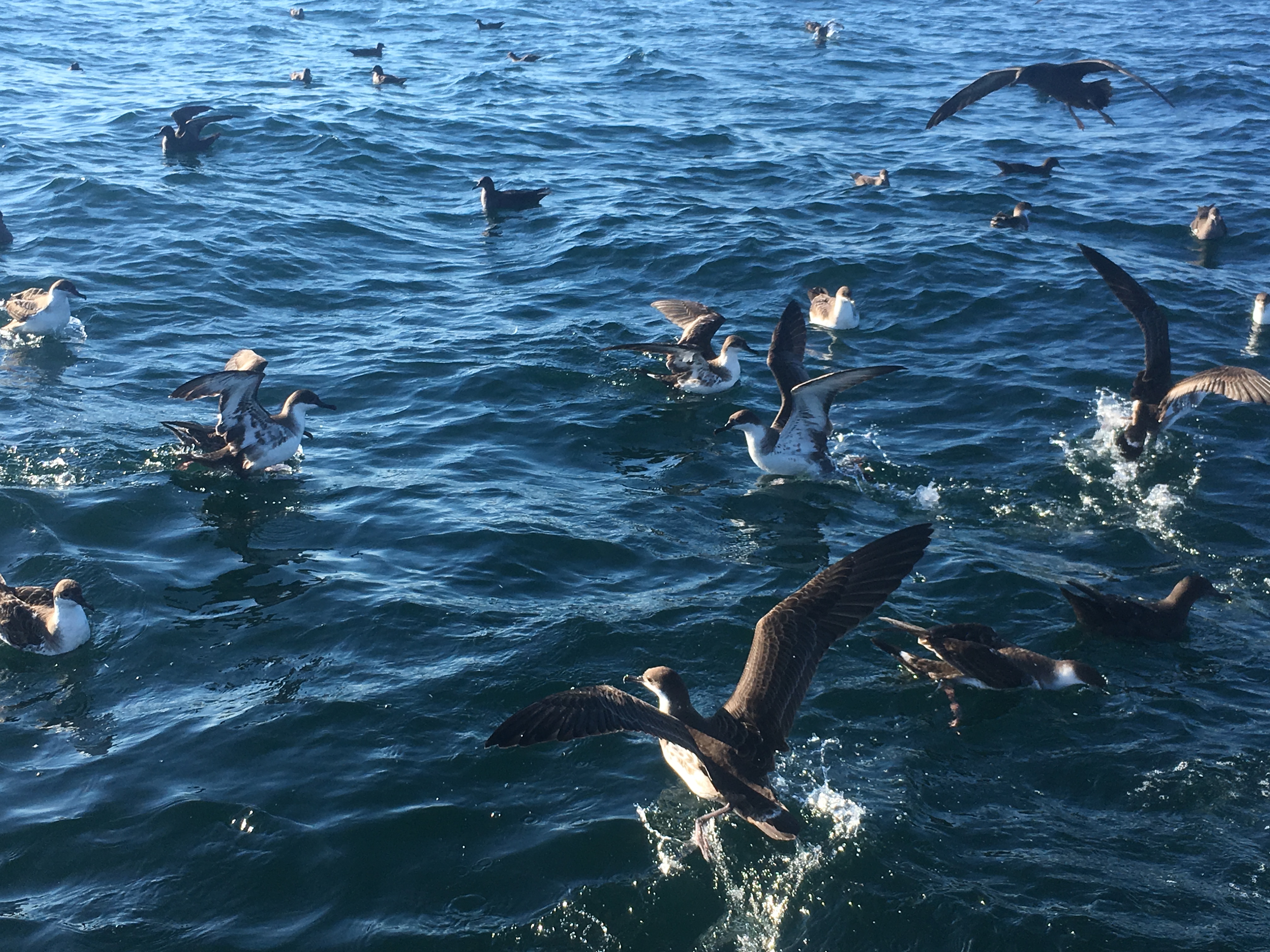Valentine’s Day–the one day a year when we celebrate romantic love. People often use this opportunity to express their feelings to others, offering chocolates, flowers or special meals in the hope of reciprocal interest. Long before we celebrated V-Day, animals in the ocean have evolved courtship strategies to help them score mates. Might there be something we can learn from them? This Valentine’s Day, let’s dive under the sea for tips on how to pass on our genes.
Tip #1: Accessorize

Male pufferfish in the Torquingener genus use their bodies and fins to make circular and intricately geometric nests (<– seriously you have to watch this video!!!) in the sand several times their size. By stirring up the sand, finer sand particles get thrown up into the water, then rain down and form a soft layer. This structure does double duty–one to attract and impress females, and two, to direct the flow of fine sand grains into the centre of the nest, something desirable for egg laying. This great feat takes a lot of work. Males work 7-9 days straight to create and maintain these intricate structures in the face of wave action. However, females do not visit until the project is complete; and for her, that means accessories. Female pufferfish have only been seen visiting a nest when males were placing finishing touches such as bits of shells or other materials on top of the peaks of his creation. When a female approaches, the male quickly fluffs up the centre of the nest then retreats for her inspection. The female will make several inspections for quality until finally laying eggs in the middle of the nest. Once the males spawn, they guard the eggs for 6 days, not bothering to maintain the design, and it gets slowly smoothed over with coarse sand. Once the eggs hatch, the males leave. Despite the amount of effort and time it takes to create this structure, males do not reuse sites but create a new structure every time to make sure there are sufficient fine sand grains.
Tip #2: Get a bigger balloon

In the North Atlantic Ocean, generally antisocial hooded seals (Cystophora cristata) form loose aggregations on pack ice during mating or moulting season. Females and males alike abide by the ‘bigger is better’ philosophy. For most of the year, males have a nasal appendage resembling a wrinkly sac that hangs over its nose, but come mating season in late March, they can inflate this sac to form a hood (hence the seal’s name). At the same time, they can also inflate a large, red ‘nose balloon’ out of one of their nostrils. Males will display their rosy nose balloons to nursing females and other males in an attempt to woo or intimidate. The idea is that if one male’s nose balloon is much larger than the other, the smaller seal will back down before resorting to the energetically costly action of fighting. When a female gives birth to a pup, the pups suckle for only four days before switching to solid food–the quickest lactation period of any known mammal! It may seem like it’s bad form to show your nose balloon to a female while she is nursing a pup, but the males are competing to claim the coveted position of being next in line. Once the pup is weaned, the winning male follows the female back into the ocean where they mate, then they go their separate ways. While it may seem laborious to become pregnant immediately after giving birth to a pup, the female has a trick up her uterus. Like all true seals, even though the male will have fertilized her egg, the egg remains unattached, delaying implantation and development. Ultimately, the female will not give birth to that pup until the next year.
Tip #3: Wave often, drum loud

Male fiddler crabs and ghost crabs are known for having one claw substantially larger than the other. To catch a female’s eye, males will wave their well-endowed claw, but it’s not just for show. In some species, once a female advances, males stop waving and switch to ‘drumming’. By quickly rapping their claw on the sand, they create sound vibrations that travel through the sand. Females can decipher this Morse code to extract some key information about her suitor: the lower the frequency, the larger the male and the faster the drumming, the stronger the male is. In the end, females are more likely to mate with larger clawed males and faster drummers for good reason. One study found that males that waved and drummed more often and harder were faster, meaning their offspring will have a better chance of escaping predators.
Want more? We’ve racked up a good list of strange mating behaviours here at oceanbites! Read about indiscriminate mating, golden showers and stabby and disposable penises here, about how box jellyfish swim together here, about sexual parasitism of anglerfish here, about how Finding Nemo would be different if screen writers accurately depicted hermaphroditic reef fishes here, and how damselfish risk it all for love here.
And purely for fun: ever wonder how big a whale penis is? Wonder no more.
References:
Kawase, H., Okata, Y., Ito, K., (2013). Role of Huge Geometric Circular Structures in the Reproduction of a Marine Pufferfish. Scientific Reports. 3(2106). doi:10.1038/srep02106
Perrin, WF, Würsig, BG., Thewissen, JGM (2009). Encyclopedia of marine mammals 2nd ed.
Takeshita, F, Minrou, M, (2016). The vibrational signals that male fiddler crabs (Uca lactea) use to attract females into their burrows. The Science of Nature. 103:49. doi: 10.1007/s00114-016-1371-2
I’m a past oceanbites writer, occasional editor and guest poster. I graduated with a Masters of Coastal & Marine Management from the University of Akureyri in Iceland, and am currently working in marine conservation. In particular, I’m supporting an Indigenous-led initiative to safeguard the largest inland sea in the world (Hudson Bay & James Bay, Canada). I love weird ocean critters and *sigh…I really do enjoy long walks on the beach.


